
"It really changed a lot," Wu Wenjun, a 27-year-old medical worker in Wuhan, told CGTN about her life since the lockdown of the megacity, which is home to over 11 million people and also the epicenter of the deadly novel coronavirus (COVID-19) outbreak.
Wu rides her electric bike to work because there is no public transportation. "The first thing I do when I wake up every morning is to check the weather report," said Wu, adding that she is getting used to carrying two napkins in case she needs to use the elevator or other public facilities.
Wu's life, along with that of millions of others in Wuhan, capital city of central China's Hubei Province, has seen great changes since the city suspended buses, subways, ferries, flights and trains for outgoing passengers on January 23 to halt the coronavirus spread which so far has sickened over 76,000 people and killed at least 2,300.
Losing the hustle and bustle of the past, Wuhan's mayor said about nine million people were in the city after the lockdown. For the ones who stayed, what are their main concerns, and what has changed?
What concerns them most?
The epidemic is becoming of increasingly great concern among people in Wuhan. Statistics from Baidu Index showed that people paid great attention to the COVID-19 outbreak, especially after the city went into an unprecedented lockdown.
Keyword searches for the word "epidemic" among Wuhan's internet users hit 7,907 within the month following January 18. Also, as the epidemic spread and the need for information grew, more and more Wuhan users sought official information via online searches.
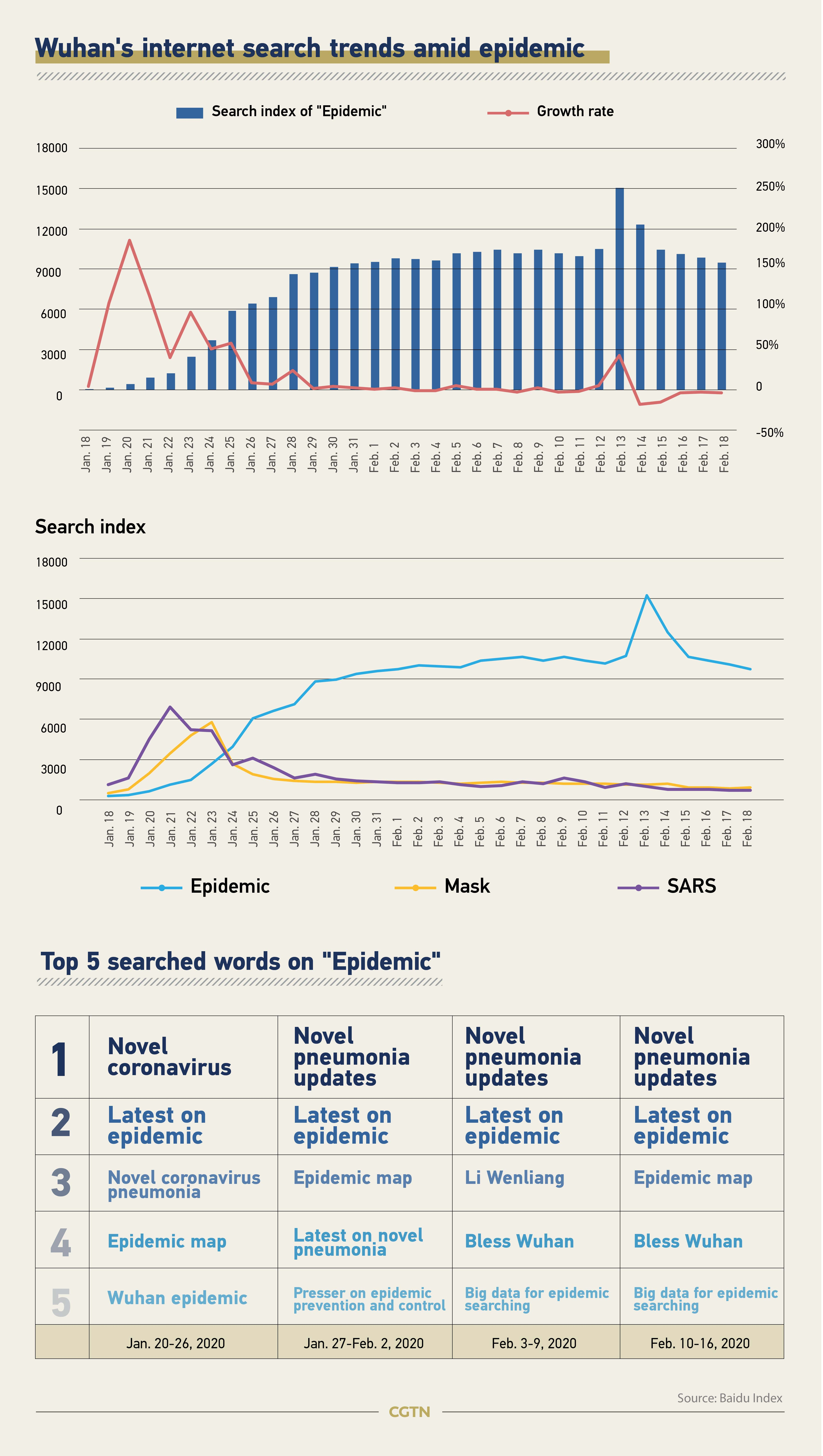
The words "mask" and "SARS" also topped the list of concerns for Wuhan people. Medical treatment and materials became crucial topics of public concern as demand for medical supplies rose sharply amid China's efforts to curb the outbreak.
Peaking on the day of the lockdown, people's attention to masks showed a decreasing tendency on the whole since China has been endeavoring to ensure medical supplies and daily necessities as it battles the epidemic.
As of February 17, the production capacity of masks in China expanded to 110 percent as many factories across the country have taken immediate action to ramp up production to fill the demand gap.
Read more: Epicenter - 24 hours in Wuhan
56:37
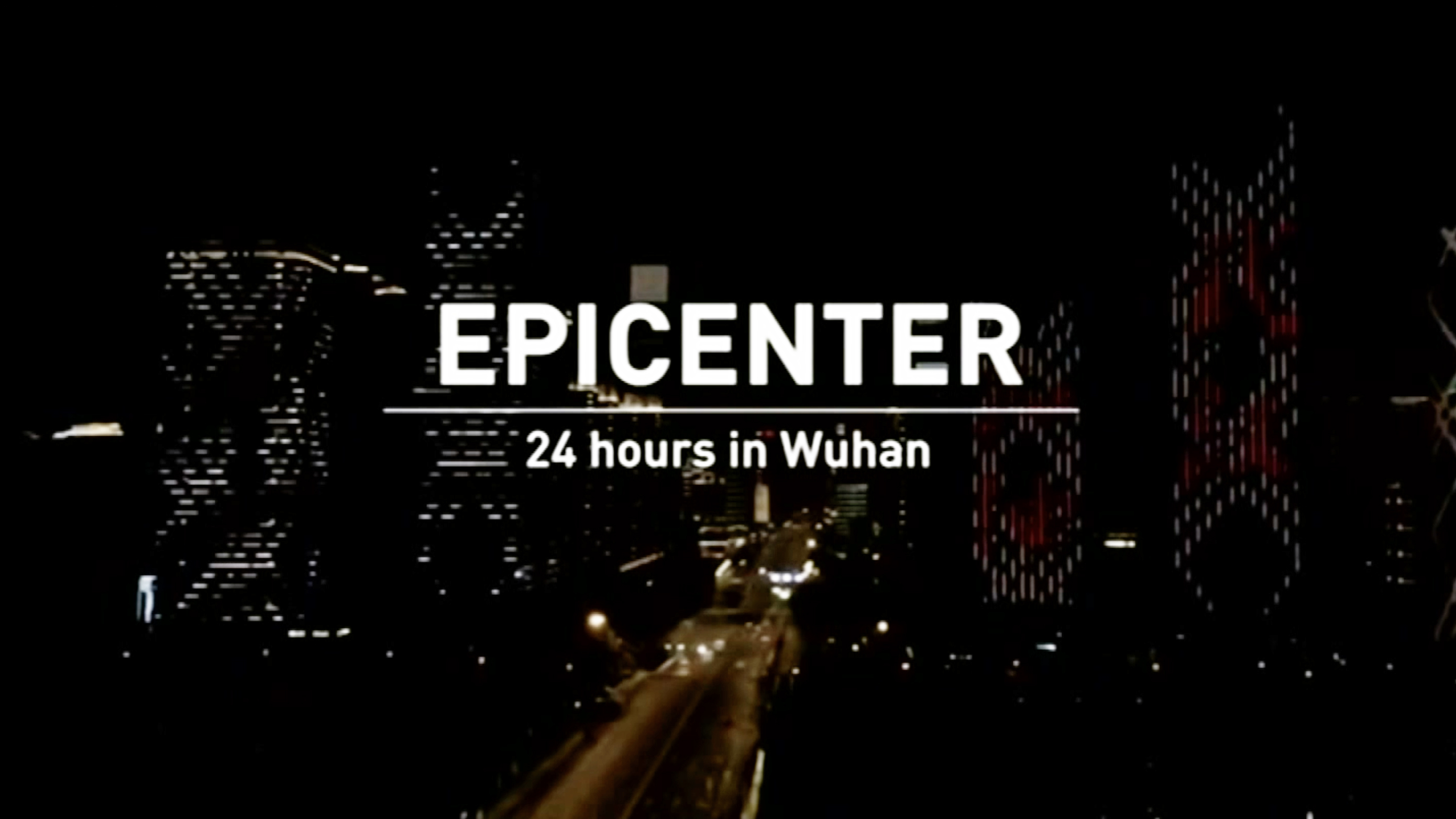
From offline to online
Zou Zuyi, 26, an English teacher in Wuhan, told CGTN that she has been working remotely via online platforms since the Chinese Lunar New Year holiday ended. Living in Jingzhou City, about 220 kilometers (137 miles) west of Wuhan in Hubei Province, she was unable to return to Wuhan as scheduled because the city suspended public transportation.
"Working online can shorten the commute. That's a good thing," she said, adding that most of her students study hard because the competition is fierce in Wuhan, which is home to several prestigious universities.
Today, the number of internet users in China stands at nearly 900 million, with an internet availability rate of over 60 percent. China saw thriving online education in recent years, thanks to the wider use of smart devices and improved internet accessibility.
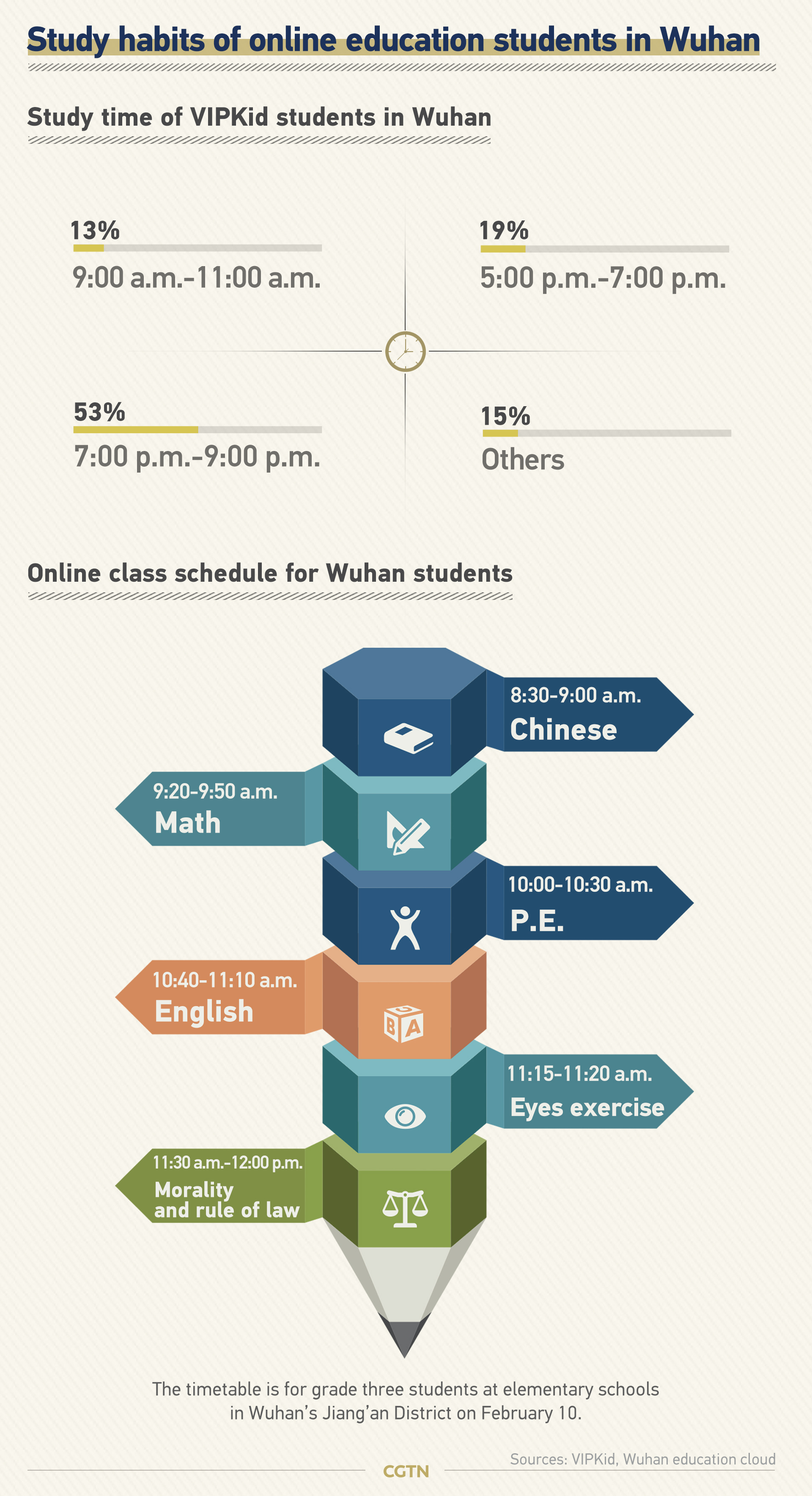
Data from VIPKid, a China-based online English language teaching platform, indicated that the average daily courses for students in Wuhan hit 10,663 between January 23 and February 13, with each lesson lasting for 25 minutes. It also revealed that over half of the students tended to study at night from 7:00 p.m. to 9:00 p.m. and that the majority, aged four to 12, chose curriculums for beginners or low level.
On February 10, nearly a million primary and secondary students in Wuhan started online courses using official educational websites. On that same day, a total of 426 open classes were organized and watched online by more than one million students and their parents.
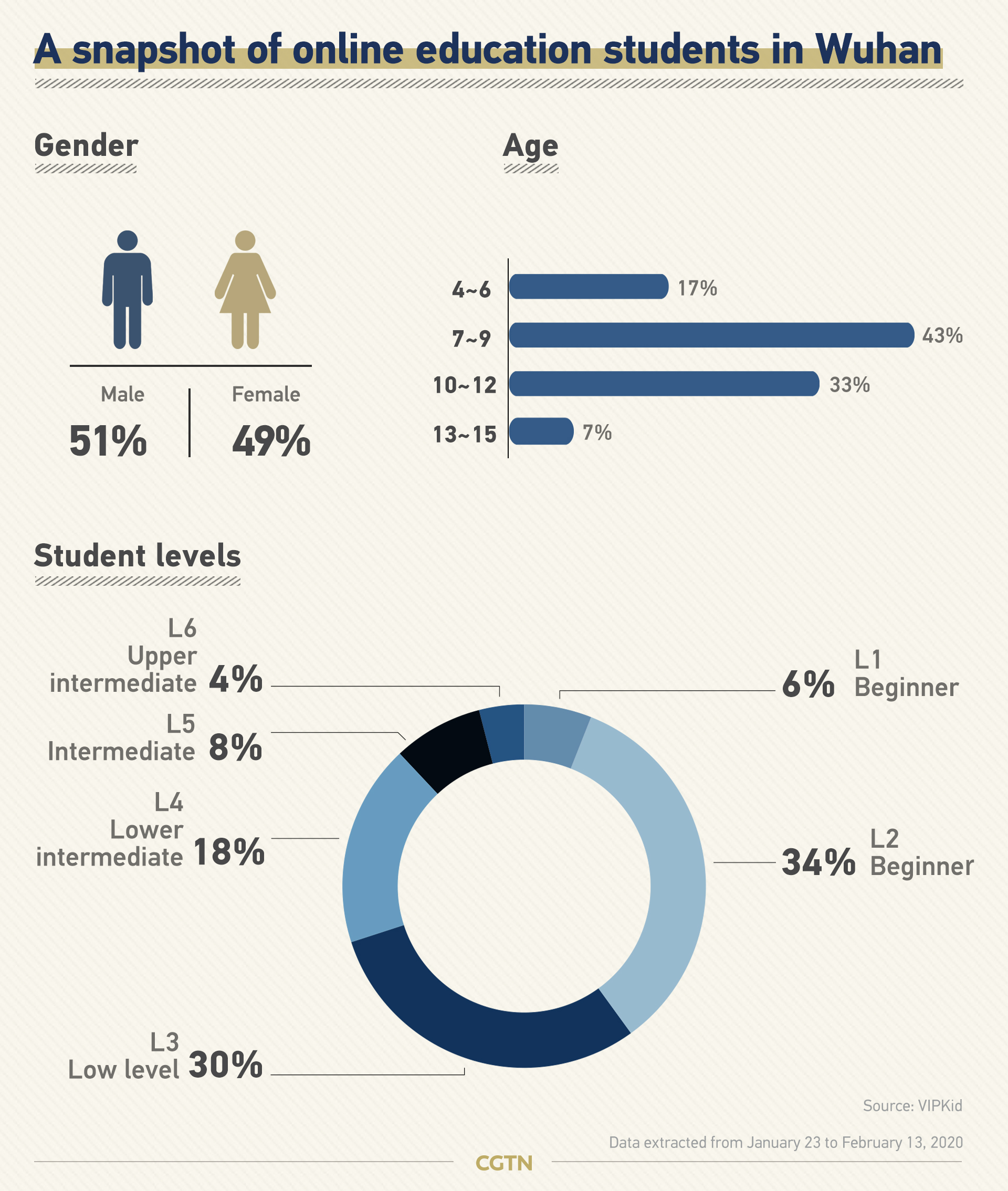
Concerted efforts across China
Since the outbreak, the Chinese government has mobilized the entire country and adopted the most comprehensive, rigorous and thorough prevention and control measures.
With over 32,000 medical workers sent to aid Wuhan, nearly 200,000 pieces of relief materials allocated to assist Hubei, and the national "pairing-up" program in which more than a dozen of provincial-level areas across the country were paired up with cities in Hubei to provide support, China has made a swift and careful response to the COVID-19 outbreak.
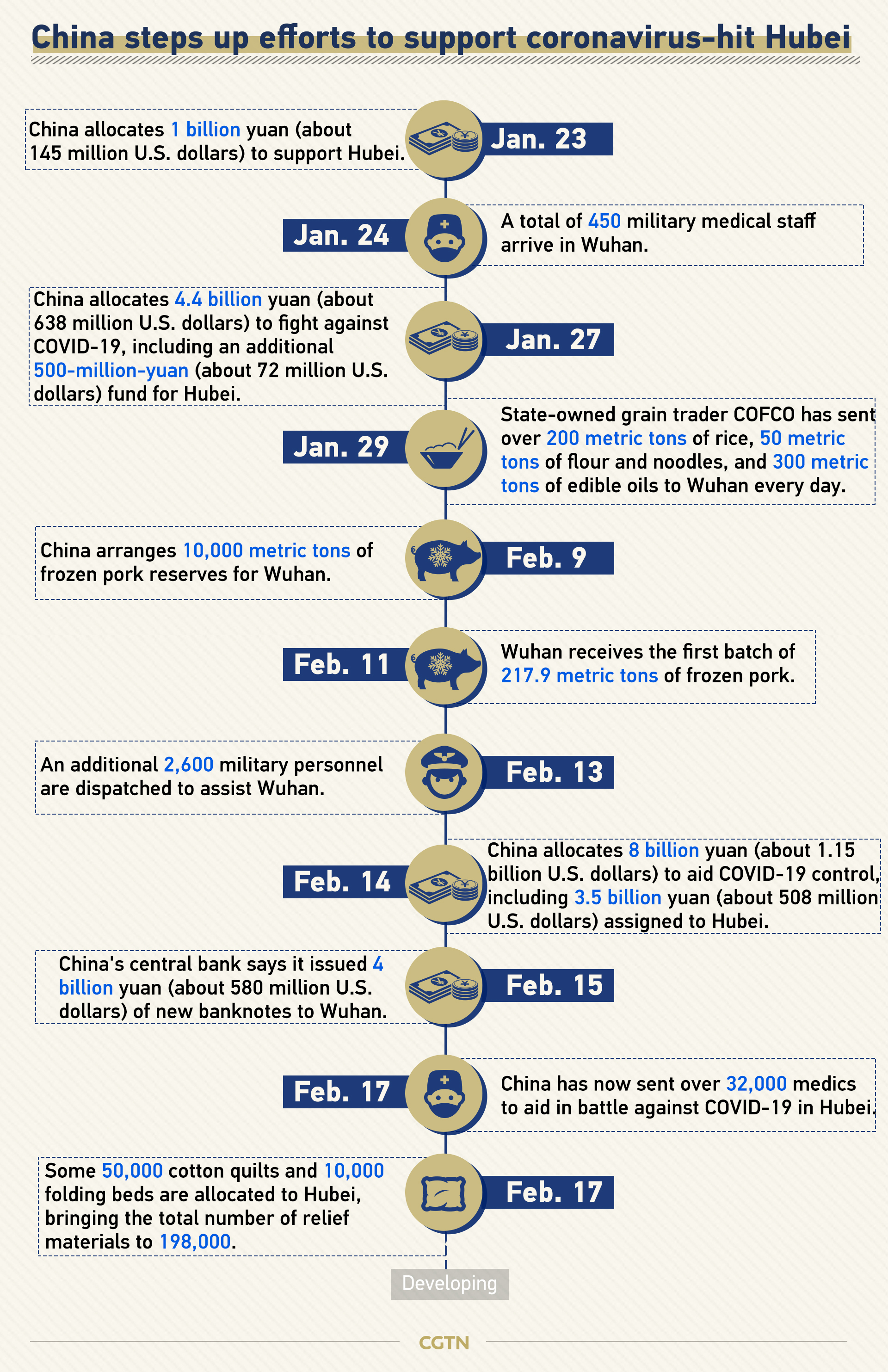
"I work in the hospital, and the community has offered us countless voluntary donations, including fresh vegetables, meat, milk, energy drinks, skin care products, sometimes even microwave ovens or medical equipment," said Wu. "The contributors always think of things before we do."
Despite the lockdown, Wuhan still works. Patients are transported to hospitals, and medical workers are dressed head-to-toe in protective covering to treat patients. Deliverymen collect and deliver takeaway meals to different places. Officers hold their positions at various checkpoints.
Read more: One day in Wuhan through a photographer's lens
"I was afraid of the city's lockdown in the beginning, but now, I have no fear at all," said Wu, "I still believe in that saying, fear comes from the unknown."
(Graphics: Gao Hongmei, Li Jingjie, Yin Yating, Jia Jieqiong)